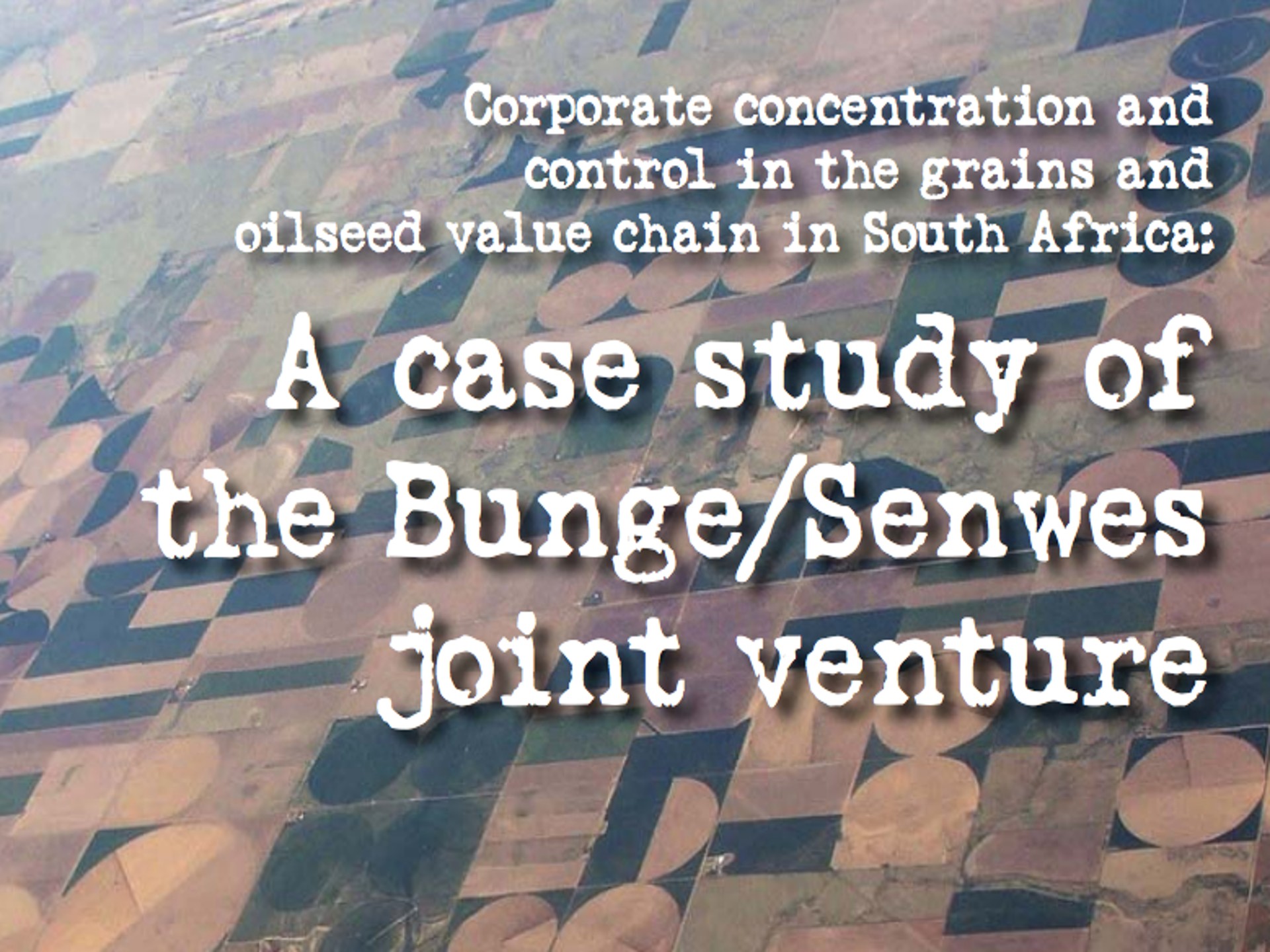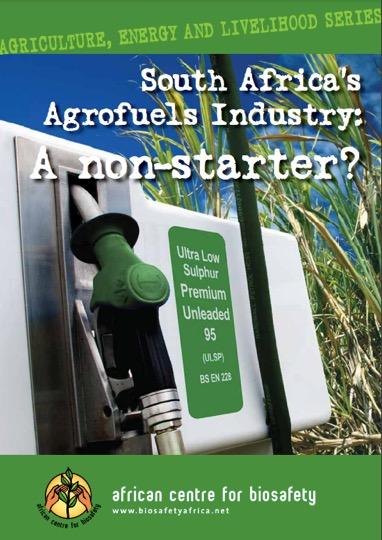Latest Resources

3 October 2011
Corporate concentration and control in the grains and oilseed value chain in South Africa: A case...
The Bunge/Senwes joint venture signals the first significant investment by Bunge in Africa. Bunge is one of the world’s largest and most influential corporations and is amongst a handful of companies dominating global trade in agricultural commodities. Senwes holds a dominant position in the South African market for the storage and handling of grain crops. […]

3 September 2011
GM Banana Slips in South Africa: Key Issues and Concerns
In this briefing we deal with the application by the University of Pretoria for permission to conduct the first ever field trials in South Africa involving GM bananas. The rationale for the genetic modification is to combat Fusarium wilt, caused by a soil born fungi Fusarium oxysporum f.sp cubense (Foc). The idea is to genetically […]

13 May 2011
HEAVY HANDS – Monsanto’s control in South Africa
This paper seeks to update an earlier report, published by the African Centre for Biosafety (ACB) in 2004, titled ‘A profile of Monsanto in South Africa’. In that paper we found that Monsanto dominated the GM crop market in South Africa and was using its considerable power to influence agricultural markets and debates in the […]

24 March 2011
South Africa’s Agrofuel’s Industry: A non-starter?
This paper provides a brief overview of the biofuels industry in the context of the South African government’s 2008 policy. Our key finding is that the large-scale biofuels industry has stagnated almost to the point of non-existence. There is, however, a growing impetus to address the shortcomings in government policy that has held the industry […]

8 March 2011
Overview of GMO Regulatory Regime in South Africa
Following the promulgation of the Genetically Modified Organisms Act in 1997, numerous Genetically Modified Organism (GMO) applications have been approved in SA. As of 2007, GMOs commercially available in South Africa included insect resistant maize and cotton, herbicide tolerant cotton, maize and soybean, and herbicide tolerant and insect resistant cotton and maize, making up 62% […]

27 October 2010
Biosafety Protocol: Ten years on and lagging far behind
Mariam Mayet attended COP MOP 5 in Nagoya Japan. Indeed, she has been following the Biosafety Protocol discussions since 1999. In this brief, she argues that the Biosafety Protocol lags far behind the biosafety challenges faced by developing countries such as South Africa. She also expresses deep disappointment with the loss of a international civil […]

21 July 2010
Who is Biosafety South Africa
In this briefing, we present an overview of a new organisation called Biosafety South Africa. Biosafety South Africa was launched early this year, receives funding from the South African government through the Department of Science and Technology. Biosafety South Africa has no legislative mandate to influence GMO decision-making but appears set to carve its niche […]

14 May 2010
A good neighbour? South Africa forcing GM maize onto African markets and policy makers
Since the beginning of 2010, South Africa’s Executive Council responsible for GMO permit approvals has granted export permits for almost 300,000 Metric Tons (MT) of GM maize to be exported to Kenya, Mozambique, and Swaziland collectively, and 35,000 MT of GM soybean to Mozambique.1 Despite South Africa being Africa’s largest producer of maize, and a […]

12 April 2010
GM Sugarcane: A long way from commercialisation?
Despite the best part of a decade of research and field trials, genetically modified sugar cane in South Africa remains a long way from commercial cultivation. Numerous research projects are currently underway at a number of publicly and privately funded research bodies, most of which are concentrating on increased sucrose and biomass content. Late last […]

4 March 2010
The GM stacked gene revolution: A biosafety nightmare
Stacked GMOs are those containing more than one gene genetically engineered into a crop plant. A controversial stacked GMO, Smarstax containing 8 such genetically engineered genes, was commercially approved in the US, Canada, Japan and South Korea during 2009. Stacked gene varieties are highly complex, posing new biosafety risks that outpace the capacity of regulatory […]
